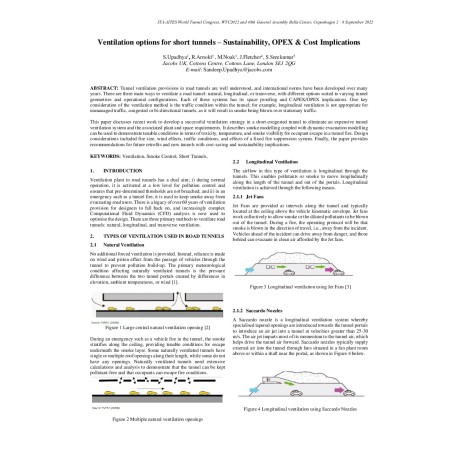Cart
0
0
No document
0,00 €
Total
Document successfully added to your shopping cart
Quantity
Total
There are 0 items in your cart.
There is 1 item in your cart.
Total documents
Total shipping
To be determined
Total
Search & filter
Search for a publication
Search & filter
Ventilation options for short tunnels - Sustainability, OPEX and Cost Implications
Ventilation_Options_for_Short_Tu
S. Upadhya / R. Arnold / M. Noak / J. Fletcher / S. Sreekumar
Tunnel ventilation provisions in road tunnels are well understood, and international norms have been developed over many years. There are three main ways to ventilate a road tunnel: natural, longitudinal, or transverse, with different options suited to varying tunnel geometries and operational configurations. Each of these systems has its space proofing and CAPEX/OPEX implications. One key consideration of the ventilation method is the traffic condition within the tunnel; for example, longitudinal ventilation is not appropriate for unmanaged traffic, congested or bi-directional tunnels, as it will result in smoke being blown over stationary traffic. This paper discusses recent work to develop a successful ventilation strategy in a short-congested tunnel to eliminate an expensive tunnel ventilation system and the associated plant and space requirements. It describes smoke modelling coupled with dynamic evacuation modelling can be used to demonstrate tenable conditions in terms of toxicity, temperature, and smoke visibility for occupant escape in a tunnel fire. Design considerations included fire size, wind effects, traffic conditions, and effects of a fixed fire suppression system. Finally, the paper provides recommendations for future retrofits and new tunnels with cost-saving and sustainability implications.




